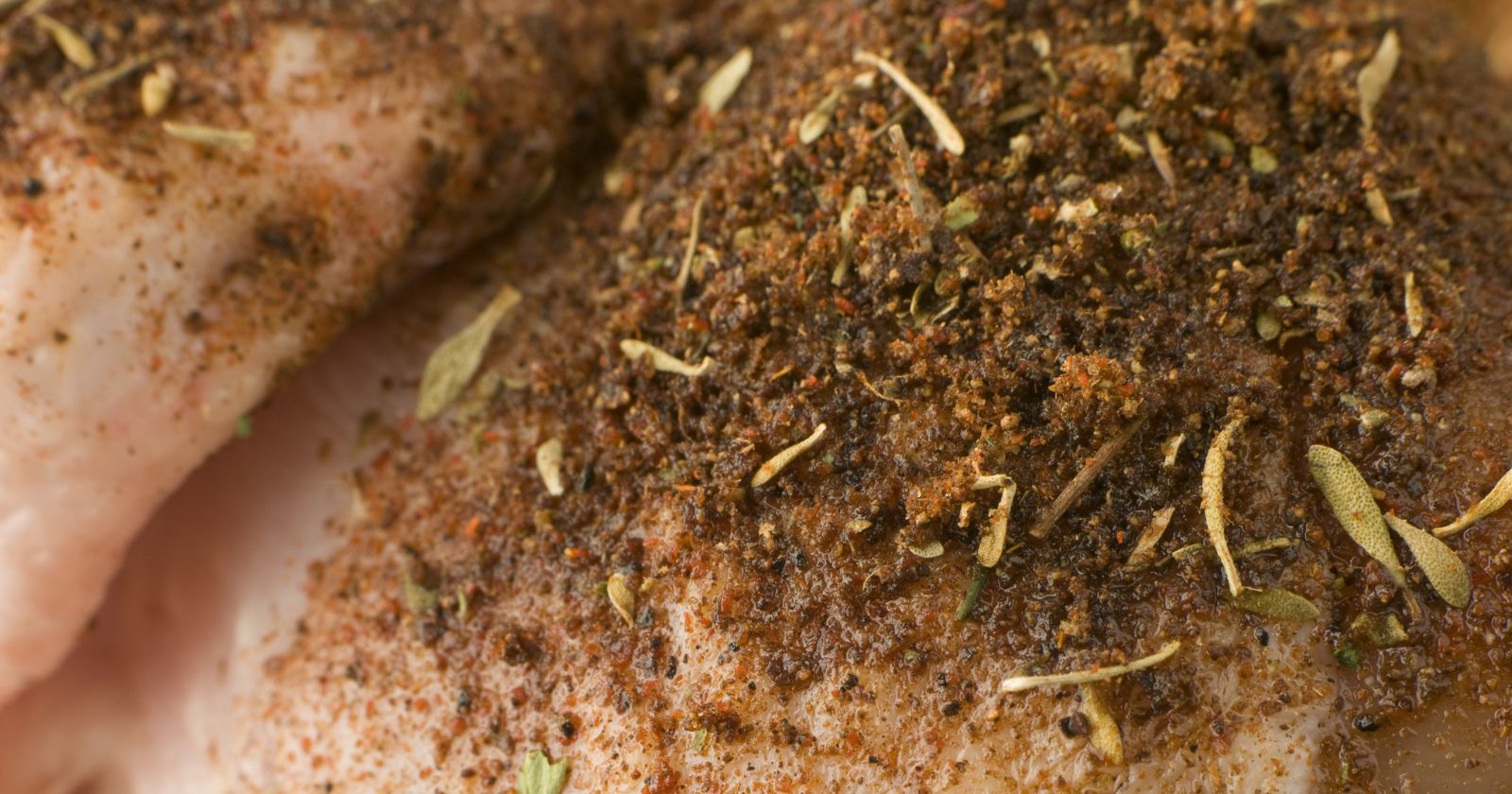Get ready to turn up the heat and awaken your taste buds with the flavorful and spicy goodness of jerk seasoning! If you love bold flavors and enjoy exploring new cuisines, this post is definitely for you.
Are you tired of the same old bland meals? Are you looking for a way to
In this article, we’ll explore the rich history and cultural significance of jerk seasoning, the key ingredients that make it so delicious, and how you can incorporate it into your cooking at home.
From dry rubs to marinades, we’ll cover a variety of ways that you can use jerk seasoning to add some excitement to your meals. So grab your apron and prepare to take your taste buds on a flavorful journey!
The Origins and History of Jerk Seasoning: A Cultural Icon
Jerk seasoning, a traditional Jamaican
The Maroons, notorious for rebelling against the British and taking refuge in the hills, intermingled with the tribes and learned meat preservation methods. By combining these methods with African meat cooking techniques, the Maroons created the popular jerk seasoning known and loved worldwide today.
Jerk seasoning has a rich history of culinary diversity, thanks to the use of spices and herbs native to Jamaica. An authentic Jamaican, it’s not just about the flavors as it carries a lot of history and cultural significance and is now shared with the world.
This cultural icon is a unique blend of ingredients, including Scotch Bonnet peppers, thyme, allspice, and garlic, which gives it a bold and satisfying flavor.
Today, jerk seasoning has become synonymous with Jamaica, a globally recognized icon of the country’s culture. The popularity of jerk seasoning continues to soar, as the herb has earned a permanent place in kitchens around the world.
Visitors to Jamaica often search for authentic jerk seasoning dishes, which can be found at roadside stands, beaches, and popular restaurants. Many chefs have experimented with the flavor of jerk seasoning, using it to add a unique twist to traditional dishes.
Thus, experiencing new ways to enjoy the herb while still capturing the conventional recipes invented by indigenous Jamaicans many years ago.
The Key Ingredients of Jerk Seasoning: From Scotch Bonnet Peppers to Allspice
Jerk seasoning is a unique
Scotch bonnet peppers are the show’s star here, providing the bold heat and savory taste we associate with this seasoning. Allspice is another crucial ingredient that gives jerk seasoning its distinctive flavor.
Thyme and garlic also play a significant role in creating the depth of flavor that makes jerk seasoning so delicious. These two ingredients work together to bring out the natural flavors of the meat or vegetables being seasoned, adding an extra layer of complexity to the dish.
In addition, the aroma of thyme and garlic alone is enough to make one’s mouth water. Other ingredients, like onion, nutmeg, soy sauce, and brown sugar, help balance and round out the different flavors. These ingredients create a bold and savory blend unique to Jamaican cuisine.
Scotch bonnet peppers, in particular, deserve special mention. These peppers are native to the Caribbean and are among the spiciest in the world. Despite their heat, Scotch bonnets have a natural sweetness that makes them perfect for jerk seasoning.
If you’re feeling adventurous, you could even use Scotch bonnets to make your jerk seasoning entirely from scratch! Although it’s important to note that they should be handled with gloves and caution, as their heat can be intense.
How to Make Your Jerk Seasoning: A Step-by-Step Guide
Making your jerk seasoning is easy and can be done with simple steps.
Start by gathering all the necessary ingredients: onion powder, garlic powder, cayenne pepper, salt, black pepper, allspice, nutmeg, and thyme. Once you have all the ingredients, follow the steps below to make your jerk seasoning:
- Step 1: Combine all the ingredients in a bowl.
- Step 2: Mix the ingredients until well combined.
- Step 3: Adjust the amount of cayenne pepper used based on your desired level of spiciness.
- Step 4: Store the seasoning in an airtight container for future use.
Now that you have your jerk seasoning, it’s time to put it to use! Here are a few ideas for how you can use your homemade seasoning:
- Use it to marinate the meat overnight before grilling or roasting. The longer you marinate, the better the flavor will be.
- Add it to rice or beans for a flavorful side dish.
- Sprinkle it over roasted or grilled vegetables for a spicy kick.
Jerk seasoning is a versatile
One thing to remember when making jerk seasoning is that the allspice and thyme are essential ingredients that give it its signature flavor. However, if you don’t have one of the other spices, you can leave it out or substitute it for something else. For example, if you don’t have nutmeg, you could try using cinnamon instead.
The Many Uses of Jerk Seasoning: From Dry Rubs to Marinades
Jerk seasoning is a versatile
One of the most popular ways to use jerk seasoning is as a dry rub or marinade. Dry rubs are a mixture of spices rubbed into meat or vegetables before cooking, while marinades are liquids used to soak meat or vegetables before cooking.
Jerk seasoning can be used as both a dry rub and a marinade, making it a convenient
When using jerk seasoning as a dry rub, it is essential to ensure that the seasoning is thoroughly applied to the meat or vegetables and left in the refrigerator overnight to allow the flavors to penetrate the food. This creates a deliciously crispy and flavorful exterior when grilled or roasted.
Additionally, when using jerk seasoning as a marinade, it is best to mix it with oil, vinegar, or citrus juice to create a rich and flavorful liquid that can be used to marinate meat or vegetables for several hours before cooking.
Aside from being used as a dry rub or marinade, jerk seasoning can also be added to various dishes to add flavor and
- Add a sprinkle of jerk seasoning to roasted sweet potatoes for a sweet and spicy side dish.
- Mix jerk seasoning into ground meat for a flavorful twist on traditional burgers or meatballs.
- Use jerk seasoning to season roasted nuts or snack mixes for a spicy snack.
- Mix jerk seasoning into mayo for a spicy sandwich spread or dipping sauce.
- Sprinkle jerk seasoning on popcorn for a bold and flavorful snack.
Pairing Food with Jerk Seasoning: What to Serve with This Bold Flavor
Jerk seasoning is a bold and exciting flavor to add to any dish. It pairs well with various foods, and when served with jerk chicken, many side dishes can complement its bold flavors.
Let’s explore some of the best options for pairing food with jerk seasoning.
One of the top choices for serving jerk chicken is rice and beans. This dish provides a neutral base for the bold flavors of the seasoning, making it an excellent option for balancing out the heat.
Roasted potatoes or plantains are also great options for adding texture and depth to your dish.
These starchy elements counteract the spiciness of the jerk seasoning, making it a more approachable meal for anyone sensitive to the heat.
Fruits like mango or pineapple are top choices for balancing out the spiciness of the jerk seasoning. Mango salsa or grilled pineapple can make for a delicious and refreshing side dish when serving jerk chicken.
Corn on the cob is another excellent option for complementing the bold flavors. Its slightly sweet taste provides a milder base for the seasoning, which balances out nicely.
Vegetables are not forgotten when planning what to serve with jerk seasoning. Steamed broccoli or other cooked vegetables can provide a healthy and tasty addition to your meal.
Salads are another fantastic option for contrast, with their fresh and bright flavors cutting through the richness of the jerk chicken’s flavors.
Tips and Tricks for Cooking with Jerk Seasoning: How to Get the Perfect Balance of Heat and Flavor
Do you love the bold flavor of jerk seasoning but need help getting the perfect balance of heat and flavor when cooking? Don’t worry; we’ve covered you with these tips and tricks!
First and foremost, using the right amount of jerk seasoning is crucial. Too much can easily overpower your dish, while too little can make it bland. Aim for a balance of flavors that complements your meal as a whole.
One way to adjust the level of spiciness is to add more sweet or savory ingredients such as brown sugar, honey, or soy sauce. This can help to tone down the heat without compromising the flavor. Feel free to experiment with combinations once you find the perfect balance for your taste buds!
Another critical tip is to use fresh ingredients whenever possible. Fresh ingredients are typically more aromatic and flavorful than their dried counterparts. Fresh garlic, thyme, and allspice will add a vibrant, bold flavor that just can’t be matched by dried spices.
If you want to take your jerk seasoning game to the next level, try marinating your meat in the seasoning before cooking. This allows the flavors to infuse into the heart, ensuring it’s evenly seasoned and flavorful.
You can also experiment with different side dishes such as rice and beans, roasted potatoes, or grilled pineapple to find the perfect pairing for your jerk seasoning.
Jerk Seasoning Substitute
Are you looking for a jerk seasoning substitute? No worries! There are plenty of options to choose from.
While the exact flavor may differ slightly, several spices and blends boast similar flavor profiles. Try experimenting with ground cumin, allspice, black pepper, nutmeg, thyme, sugar, salt, onion powder, garlic powder, citric acid,
Rogan Josh seasoning, Ras El Hanout, or Baharat
- Ground cumin is a great substitute, as it brings a smoky flavor to the dish, just like jerk seasoning.
- Allspice, known for its warming and sweet notes and used in jerk seasoning, is another good choice.
- Black pepper provides a hint of
spice and heat, while nutmeg adds a sweet, nutty essence. - Thyme gives a subtle earthiness to the dish, while sugar balances the flavors.
- Salt enhances the overall taste, while onion and garlic powder add some depth.
- Citric acid adds a touch of tanginess and acerbity.
- The Rogan Josh seasoning, Ras El Hanout
spice blend, and Baharat spice blend are a mix of exotic spices that will enhance the overall flavor of your dish.
Once you have settled on a substitute, use it the same way as you would jerk seasoning. Now that you know the best jerk seasoning substitutes, try them out.
Experiment with each one until you find the perfect flavor for your recipe. Whichever substitute you choose, your dish will still be delicious, and your taste buds will be pleased.





